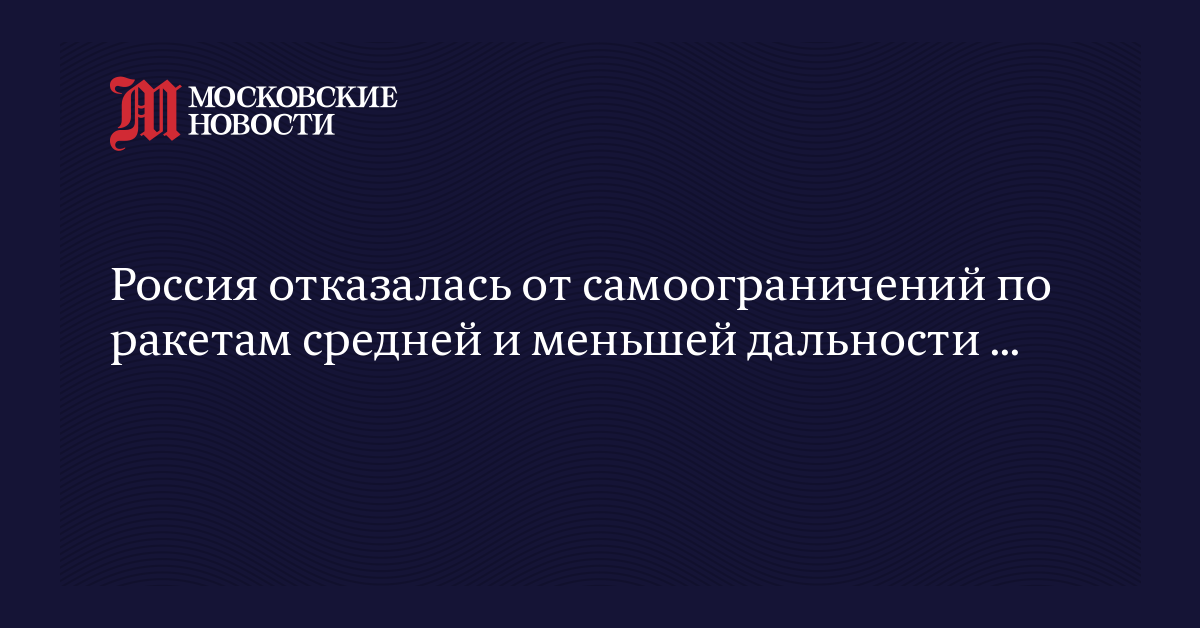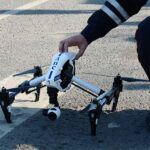Russia no longer considers itself bound by previously adopted self-restrictions on the deployment of intermediate and shorter-range missile systems (INF), according to a statement from the Russian Ministry of Foreign Affairs.
- The statement notes that Western countries are moving toward the formation and buildup of “destabilizing missile capabilities” in regions adjacent to Russia, which pose a threat to its security. For example, the ministry references the US plans to deploy hypersonic weapons in Germany by 2026.
- The document also mentions an incident in April 2024, when a medium-range missile system, “Typhon,” was delivered to the Philippines under the pretext of military exercises. According to the Russian Foreign Ministry, it remains stationed in the archipelago. The ministry emphasized that such actions could undermine global stability.
- Additionally, the Foreign Ministry clarified that decisions on responding to the actions of the “collective West” will be made by Russian leadership based on an interagency analysis of the scale of deployment of American and other Western intermediate and shorter-range missiles.
- In early July 2024, Russian President Vladimir Putin stated that if US-made intermediate and shorter-range missile systems appear in any region of the world, Russia reserves the right to respond in kind.
- In 2018, the US accused Russia of violating self-restriction obligations by developing the 9M729—a cruise missile with a range exceeding 500 km. In 2019, the United States withdrew from the INF Treaty. Russia then raised objections to the deployment of Mk-41 launchers in Romania, and in the same year, Vladimir Putin signed a law suspending the Intermediate-Range Nuclear Forces Treaty. Since then, Russia had adhered to a voluntary moratorium on deploying such systems.
INF Treaty
The **INF Treaty (Intermediate-Range Nuclear Forces Treaty)** was a landmark arms control agreement signed in 1987 between the United States and the Soviet Union, eliminating all nuclear and conventional ground-launched ballistic and cruise missiles with ranges of 500 to 5,500 kilometers. It aimed to reduce Cold War tensions by removing a significant class of destabilizing weapons from Europe. The treaty collapsed in 2019 after both sides accused each other of violations, leading to its termination and renewed concerns about a potential arms race.
Typhon
“Typhon” is a figure from Greek mythology, often depicted as a monstrous storm giant or the father of destructive winds and creatures. According to myth, he was born from Gaia and Tartarus as a challenge to Zeus’s rule, leading to a cataclysmic battle where Zeus ultimately defeated and imprisoned him under Mount Etna. Typhon symbolizes chaos and natural disasters, and his legend has influenced various cultural and literary depictions of monstrous forces.
9M729
The 9M729 is a Russian ground-launched cruise missile (GLCM) developed by the Novator Design Bureau, which became a focal point in international arms control disputes. It is considered a violation of the Intermediate-Range Nuclear Forces (INF) Treaty by the U.S. and NATO, leading to the U.S. withdrawal from the treaty in 2019. Russia claims the missile’s range complies with the treaty, but Western assessments argue it exceeds the 500 km limit, escalating tensions over nuclear arms control.
Mk-41
The **MK-41 Vertical Launching System (VLS)** is a modern naval missile launch system developed by the United States in the late 20th century. Introduced in the 1980s, it is widely used by the U.S. Navy and allied forces to store and launch a variety of missiles, including surface-to-air and cruise missiles, from warships. Its modular design allows for flexibility, reliability, and rapid deployment, making it a key component in contemporary naval warfare.
Romania
Romania, located in Southeastern Europe, is known for its rich history, diverse culture, and stunning landscapes, including the Carpathian Mountains and the Danube Delta. It was once part of the Roman Empire (hence its name) and later formed the medieval principalities of Wallachia, Moldavia, and Transylvania, which united in 1859 to create modern Romania. The country is famous for landmarks like Bran Castle (often associated with Dracula), painted monasteries, and vibrant traditions blending Roman, Slavic, and Hungarian influences.
Germany
Germany is a country in Central Europe with a rich and complex history, shaped by the Holy Roman Empire, the Protestant Reformation, and the unification of its states in 1871. It played a pivotal role in both World Wars and was divided during the Cold War before reunifying in 1990. Today, Germany is known for its cultural contributions, including music, philosophy, and engineering, as well as historic landmarks like the Brandenburg Gate and Neuschwanstein Castle.
Philippines
The Philippines is an archipelago in Southeast Asia with a rich cultural heritage shaped by indigenous traditions, Spanish colonization (1565–1898), and American influence (1898–1946). Known for its vibrant festivals, diverse languages, and historic sites like the Baroque churches of Manila and the rice terraces of Banaue, it is the only predominantly Christian nation in Asia. Its history includes pre-colonial kingdoms, revolutionary movements, and a unique blend of Eastern and Western influences.
collective West
The term *”collective West”* refers to a political concept often used in Russian and some other discourses to describe Western nations (particularly the U.S., EU, and allies) as a unified bloc with shared geopolitical, economic, and cultural interests. It emerged prominently in the 21st century, especially during tensions like the Ukraine conflict, framing the West as opposing non-Western powers like Russia and China. Critics argue the term oversimplifies Western diversity, while proponents use it to highlight perceived collective actions against their interests.




